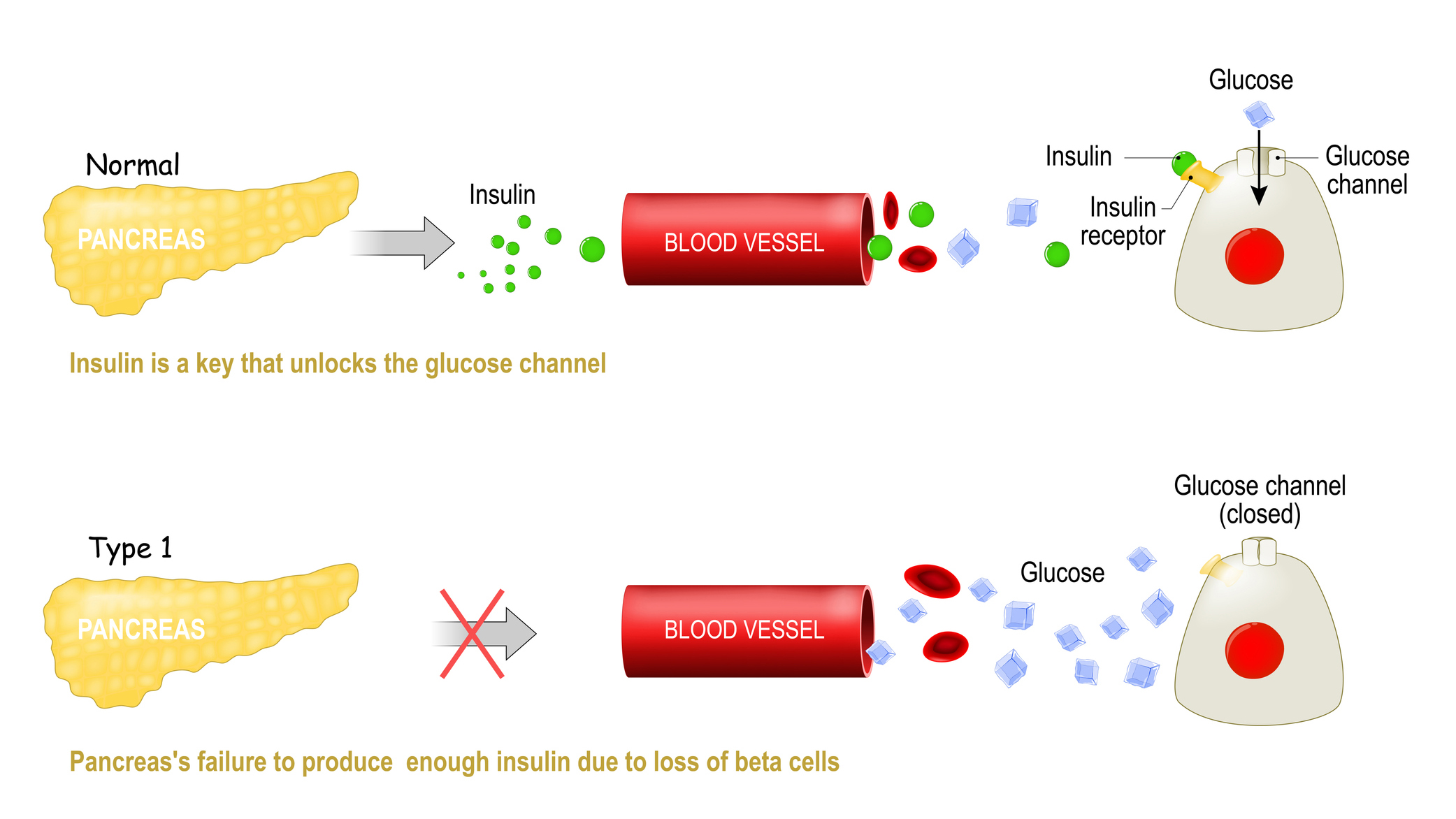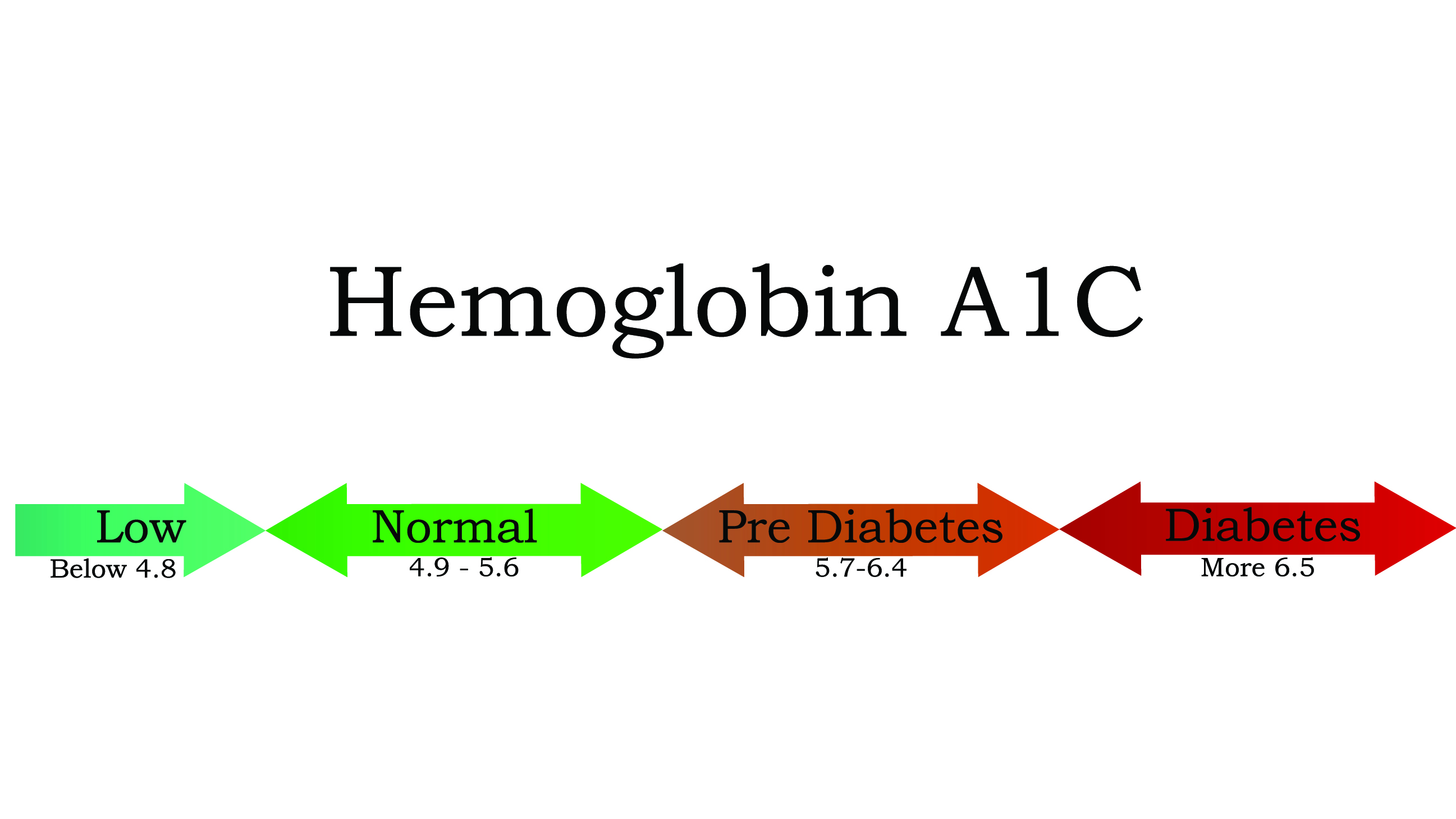What's the Right Reading for Sugar Levels
What is normal blood sugar?

Blood sugar, or glucose, is a form of sugar that serves every bit the body'south primary source of energy. We obtain glucose from the food nosotros eat, predominantly carbohydrate-rich foods such equally potatoes, rice and bread. The absorption and storage of glucose is regulated constantly past complex processes that take place in our digestive systems.
What constitutes normal blood glucose varies for an private depending on a range of factors, including age, any underlying medical conditions, and the medications they accept — and depends on when they consumed their last meal.
Normal blood sugar before and later on meals
Normal claret saccharide levels vary from person to person, but a normal range for fasting blood sugar (the amount of glucose in your claret at least eight hours afterwards a meal) is between 70 and 100 milligrams per deciliter (mg/DL), co-ordinate to the World Health Organization (WHO).
Nearly people see the level of glucose rising in their blood after eating. Co-ordinate to the American Diabetes Association (ADA), the normal blood-sugar range two hours after eating is more often than not less than 140 milligrams per deciliter. However, people without prediabetes or diabetes typically take lower blood saccharide than those guidelines suggest; a 2007 study in the Journal of Diabetes Scientific discipline and Technology that continuously measured people's claret glucose found that nigh people averaged around 82 mg/DL during the night and around 93 mg/DL during the day, and spiked to a maximum of 132 mg/DL an hour after a repast.
Variations in claret-sugar levels, both before and afterward meals, are normal and reflect the style that glucose is absorbed and stored by the body. After eating, stomach enzymes pause down carbohydrates in nutrient into smaller parts, releasing glucose, which tin be absorbed past the small intestine and somewhen passed into the bloodstream.

Once glucose has reached the blood, the pancreas releases the hormone insulin, which shepherds the glucose from the blood into cells, feeding them an essential fuel.
Generally, our bodies are designed to keep glucose levels abiding in the blood — so after all the energy needed is used, any leftover glucose is stored every bit a chemical compound called glycogen mainly in the liver and the muscles as a backup source of energy if blood glucose levels fall below optimum levels.
When there isn't enough glucose stored to maintain normal blood-sugar levels, the body can also produce its ain glucose from noncarbohydrate sources (such as amino acids and glycerol). This process, known as gluconeogenesis, occurs most oftentimes during intense exercise or starvation.
While it may seem complicated (and it is), there'south a good reason for our bodies to go along up this never-catastrophe trip the light fantastic with glucose: Too much or too niggling glucose in the blood can lead to serious health problems.
Too much glucose over an extended time (hyperglycemia) can issue in the devastation of nerves, lowered resistance to infection, and centre and kidney affliction.
On the other hand, not enough glucose in the blood over several minutes to hours (hypoglycemia) can affect encephalon function, causing fatigue, fainting, irritability and, in some cases, seizures, coma and death.
Claret saccharide targets in people with diabetes

In people with diabetes, blood sugar levels are besides high, either because the individual isn't making any insulin (type 1 diabetes), or isn't able to make or use insulin efficiently (type 2 diabetes). As a result, glucose levels so remain elevated in the blood and fuel tin can't enter cells.
Blood sugar targets for diabetes patients are based on how long the person has had diabetes for, their age, and other underlying medical conditions and lifestyle factors.
But more often than not, according to the ADA, for most non-pregnant adults with diabetes the fasting blood saccharide target range should be in the range of between 80 and 130 mg/DL. Meanwhile, the ADA suggests the later-meal goal about two hours after eating for the aforementioned subset of patients should exist less than 180 mg/DL.
Overall, eating plenty of fruit and vegetables, maintaining a salubrious weight, and getting regular physical activity alongside medication can all aid stabilize and maintain normal blood sugar levels in people with type 2 diabetes.
For pregnant women who have pre-existing diabetes or develop diabetes during pregnancy, ADA guidelines are generally lower. Fasting glucose targets for this population should be less than 95 mg/DL, while they propose that the later-meal goal most two hours after eating should exist below 120 mg/DL.
What is a normal A1C?

A person's A1C is a measure of their average blood glucose levels over the previous 2 or 3 months, and it is measured through a blood test. A normal result for someone without diabetes or prediabetes would be below five.7%; an A1C between 5.7% and 6.4% indicates prediabetes; and if your A1C is above six.4% you would exist diagnosed as having diabetes, according to the CDC.
Specifically, the A1C test is a measure of the percent of your cherry blood cells that accept sugar-coated hemoglobin attached to them. The glucose that enters your bloodstream (from carbohydrates that yous swallow) gets stuck to hemoglobin molecules on cerise claret cells. And the more glucose in your bloodstream (college blood sugar levels), the more of your blood's hemoglobin will exist "sugar-coated," and the college your A1C volition exist, according to the CDC. As such, for people with diabetes (type ane or two), the number can give you and your doctors a sense of how well your sugars are being controlled.
The ADA recommends that most adults with diabetes should proceed their A1C below 7% to reduce the risk of diabetes-related complications; the goal is the mostly the same for many children with diabetes Targets for the elderly with diabetes are slightly less stringent — for the otherwise salubrious with few coexisting chronic illnesses and intact cerebral role, the ADA recommends less than 7.v%, while those who don't run into these requirements take a more lenient goal of below viii.0% to 8.5%.
Co-ordinate to the Mayo Clinic, higher A1C numbers are linked to a greater hazard for diabetes complications, while lower A1Cs have been correlated with a reduced risk of these complications, such as heart disease, kidney disease and vision problems.
This commodity is for informational purposes just, and is not meant to offer medical advice.
This commodity was updated on January. 19, 2022 by Live Science Correspondent Natalie Grover.
Additional resources
- Learn more almost how high blood sugar levels put yous on the road to developing diabetes and eye disease in this explainer past Harvard Health.
- Read almost the run a risk of high sugar levels and diabetes in pregnant women in this explainer by the Cleveland Clinic.
- Discover the dangers of low claret saccharide, with or without diabetes, in this explainer by the Mayo Dispensary.
- Check out this book by Adam Brown, the creator of the column and nonprofit called diaTribe "Bright Spots & Landmines: The Diabetes Guide I Wish Someone Had Handed Me." In information technology, you'll detect tips and strategies from the author who was diagnosed with T1D in 2001. He argues that if you focus on the problems and mistakes of managing the disease (the landmines), you'll miss out on the bigger opportunities (the bright spots).
- If your child has been diagnosed with type 1 diabetes, this volume tin help you navigate certain situations and life changes during an overwhelming time. The volume, called "The Type ane Life: A Road Map for Parents of Children with Newly Diagnosed Type ane Diabetes," is written and published by Jessica Freeman, who gives advice based on her own feel of having the disease.
Bibliography
"The Big Movie: Checking Your Blood Sugar," American Diabetes Association. https://www.diabetes.org/healthy-living/medication-treatments/blood-glucose-testing-and-control/checking-your-blood-sugar
"Mean fasting blood glucose." Earth Health Organization. https://www.who.int/information/gho/indicator-metadata-registry/imr-details/2380
"Continuous Glucose Profiles in Healthy Subjects under Everyday Life Conditions and after Different Meals" 2017, Journal of Diabetes Scientific discipline and Technology https://www.ncbi.nlm.nih.gov/pmc/manufactures/PMC2769652/
"Direction of Diabetes in Pregnancy: Standards of Medical Care in Diabetes—2021." ADA. https://diabetesjournals.org/care/article/44/Supplement_1/S200/30761/14-Management-of-Diabetes-in-Pregnancy-Standards
"Diabetes tests." CDC. https://www.cdc.gov/diabetes/basics/getting-tested.html
"Understanding A1C." ADA. https://www.diabetes.org/a1c
"Older Adults: Standards of Medical Intendance in Diabetes—2021." ADA. https://diabetesjournals.org/care/article/44/Supplement_1/S168/30583/12-Older-Adults-Standards-of-Medical-Care-in
"A1C test." Mayo Clinic. https://www.mayoclinic.org/tests-procedures/a1c-test/about/pac-20384643
Originally published on Alive Science.
Source: https://www.livescience.com/44498-what-is-normal-blood-sugar.html
0 Response to "What's the Right Reading for Sugar Levels"
Post a Comment